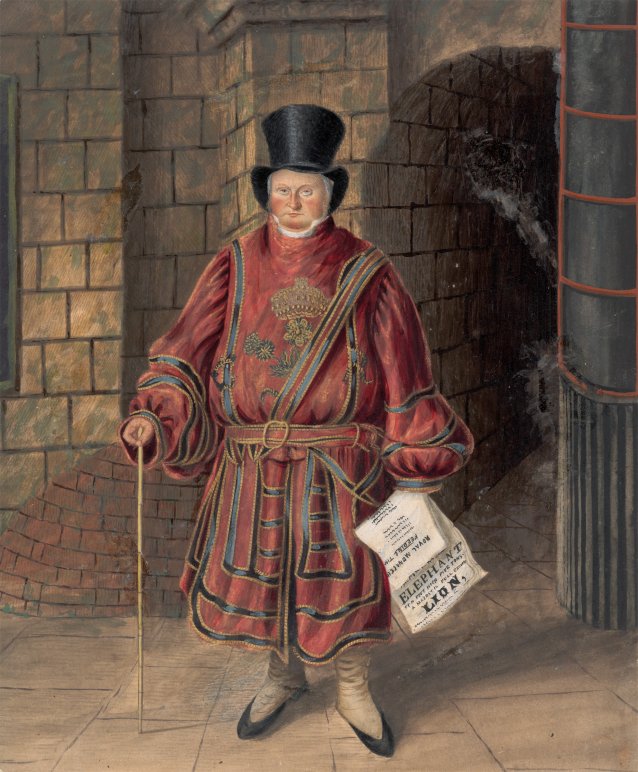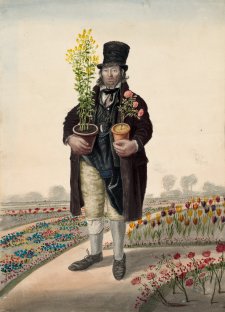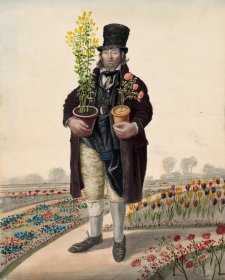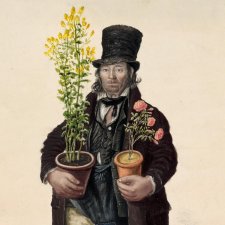In a reminiscence published in 1865, William Henry Wills, assistant editor of Charles Dickens’ magazine All the Year Round, noted that, in the early decades of the 19th century, ‘every country visitor was bound, within the first week of his sojourn in London, to ascend St Paul’s and to the top of the Monument; to inspect the waterworks at London Bridge, the lions in the Tower … Miss Linwood’s [embroidery] exhibition in Leicester-square, and Mrs Salmon’s shilling wax-works in Fleet Street’. The other attraction on Wills’s must-see list was ‘Mr Crosse’s [sic] menagerie at Exeter Change’. Remarkably, this numerous, noisome and noisy collection was located in the heart of the city, on the north side of the Strand, immediately above an arcade passageway full of small cutlery and fancy-goods stalls.
In 1793 the itinerant showman Gilbert Pidcock had purchased the Exeter Exchange building as winter quarters for his caravan of wild animals and, before long, took up more or less permanent residence. A combination of astute marketing through newspapers and handbills, skilful management of the captive beasts and refreshment of the attraction through ongoing purchases of rare or unusual specimens eventually made the Exeter Change menagerie one of London’s most popular entertainments. The clientele included not only Wills’s many ‘country visitors’ but also the distinguished painters Jacques-Laurent Agasse and Edwin Landseer, writers Lord Byron and William Wordsworth and scientists Joshua Brookes and J.E. Gray.
Following Pidcock’s death in 1810, the establishment was bought at auction by another menagerist, Stefano (Stephen) Polito, by whom it was ‘revived and improved (as) the first emporium of living curiosities in the known world’. When Polito himself died in 1814, it passed to his close associate Edward Cross, who was to manage it most successfully through the next three decades.
Pidcock and Cross named their establishment the Royal (later Royal Grand National) Menagerie, without an official warrant but in honour of the menagerie at the Tower of London, where Britain’s monarchs had kept and exhibited wild animals since the 13th century. In further tribute, the spruiker who stood at the entrance was dressed in a scarlet tabard emblazoned with a Tudor rose, the uniform of the Yeoman Warders of the Tower, popularly known as Beefeaters. Another Victorian memoirist remembered this concierge very clearly: ‘The Beef-eater holds in his hand a quantity of small printed bills, describing the wonders of the exhibition, and as he moves to and fro three or four steps in front of the little door, is perpetually wetting his thumb and thrusting a bill into the hands of passengers, while he exclaims, in the tone peculiar to showmen, “Walk up, and see the wonderful collection — all alive!”’ Victorian detective Henry Goddard recalled the patter in more detail:
Look here! look here! the most extraordinary animals in the world to be seen alive for the small charge of one shilling; the wonderful great Elephant Chunee, and Nero the largest Lion ever seen in the whole world, the Boa-constrictor and the laughing Hyena, Ourang Otang [sic], Birds of Paradise, Ostriches and every living animal from the Jungles in the Far East.
While the attendant in Dempsey’s watercolour has not been identified by name, he is summoned to life by these descriptions. Considering his ample girth, it is possible that he is the same man caricatured in Thomas Rowlandson’s etching of c. 1818, though here his hair has become white and his Tudor bonnet has been replaced by a rather incongruous Regency top hat. The work is probably from the mid-1820s; Dempsey’s other London subjects bear the date 1824. It is certainly from before 1826; in March of that year, the elephant mentioned on the handbill, Chunee, since 1809 one of the main attractions of the menagerie, famously went mad (either in musth or from toothache) and had to be shot.
Cross’s inner-city zoo did not long survive the death of Chunee or the 1820s drive for urban improvement. The Exeter Change menagerie closed in April 1829, with its occupants being transferred to rather more expansive premises at Regent’s Park and the Surrey Zoological Gardens.
Collection: Tasmanian Museum and Art Gallery, presented by C. Docker, 1956
















